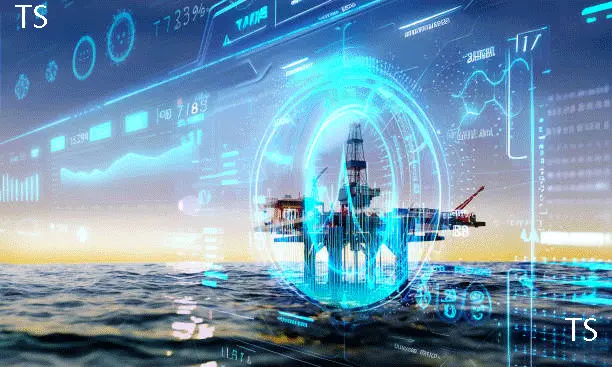In this modern world, technology is changing very fast. Deep offshore technology is one of the technologies in high demand in developing countries. As the countries continue developing, they need more gas to fuel homes, oil, and power stations. But finding these resources on the land becomes harder. To solve this problem, deep offshore technology comes. This technology refers to the tools and the system that are used to produce and explore oil and gas far from the ocean surface. This technology allows the tool to go deeper, even 2000 meters deep in the ocean. We discuss this Deep Offshore Technology in this article.

What is deep offshore technology?
The technology which is used for the extraction of oil spills is only the Deep Offshore Technology. They contain special machines that work in deep water and help us with their extraction. They can also work in the extreme depth of water, even 2000 meters deep. It contains some special tools like
Subsea Drilling Rigs.
Subsea pipelines and control systems.
These tools allow these machines to extract these resources safely and quickly from the depths.
Why is deep offshore technology important?
Deep offshore technology is important for us for the following reasons:
More Oil and Gas Reserves
A lot of new gas and oil fields are located under the deep ocean. Without using the Deep Offshore Technology, we cannot reach these resources.
Energy Security
Developing countries now want to reduce their dependence on other countries for imported energy. By using this technology, they can increase their energy resources and reduce their dependence and also decrease their cost price, which they can spend on imported energy.
Economic Growth
Deep offshore technology helps the country to increase its economic growth. It brings investments, jobs, and development to the coastal region. It also supports industries like engineering, shipbuilding, and technology.
Components of Deep Offshore Technology
The following are the components of Deep Offshore Technology:
Subsea System
One of the main components of this technology is a subsea system. They placed these machines to collect oil in the sea.
Floating Platforms
This is the big structure that floats on the surface of the sea. It supports those people who are working far from the land. It takes the gas and oil from the seabed and stores it.
Drilling Rigs System
On the seabed, this component drills wells. In deep water, risers connect the surface platforms with the seabed. They help to bring the drilling tools and carry oil resources.
Control System
This system manages and controls all the things happening in the sea. They send the signals to the machine on and off and make sure that they work properly.
Working of Deep Offshore Technology
This offshore technology works very consciously. For their proper working, they follow some steps, which are given below.
Exploration
Before using this, a geologist first finds out where the gas and oil may be present. To find it, they use the following tool.
Seismic Surveys: This tool sends sound waves into the seafloor through water waves, which can draw a map of underground layers.
Geological Modeling Software: This tool creates a 3D image of the possible reservoirs.
Drilling
When the exact location of the oil is found, then the process of drilling starts, and for this following rigs are used:
Floating drilling rigs: They are used to move our resources from one place to another. It controls the positioning system and checks that the reach is safe.

Semi-Submersible Rig: It is partially present inside the sea and partially above the sea. This system controls the stability of water waves.
Drill Ship: These large ships carry drilling equipment that works in ultra-deep water.
This equipment works in high pressure and low temperature, and the engineers also used smart sensors and remote control to operate these machines.
Production:
When the drilling process is completed, the process of bringing oil and gas starts. This is done with
Floating Production Storage and Offloading units (FPSOs): These are the big ships that start the process and store oil before transferring it to other tankers.
Subsea production systems: This is the machine that directly brings the oil pumps to the surface.
Flexible risers and flowlines: These are the pipes that carry oil and transfer it to the ships.
Transport
When all the above steps are completed, the process of transport to land starts. It allows
Underwater pipelines: These pipes carry our resources safely across long distances under the water.
Tanker ships: These ships carry our oil and liquefied gas to refineries onshore.
For the tracking of the transport, a smart tracking system is used for the safety of the transport.
Types of Deep Offshore Platforms
The following are the types of deep offshore technology, and each type contain special function.
Spar Platforms
These floating platforms are tall and anchored to the seabed by a chain. It is used in deep water. and it is also very stable. They maintain the balance of water waves and can easily handle the rough water waves.

Tension-Leg Platforms (TLPs)
These platforms are used for drilling and oil production in deep water. They float on the surface and are held by a vertical tendon.
Semi-Submersible Platforms
They float partially on seawater’s surface and maintain water’s stability from the rough water waves. They are moved by tugboats.
FPSOs
This is called floating production, storage, and offloading units, which are the ships that store or process oil in the deep-sea water.
Challenges in Deep Offshore Technology
This technology is very useful for us and is a highly demanding technology. That’s why it also faces some challenges that are given below.
High Pressure
In the depths of the seawater after 2000 meters, the pressure of the water is very high, so they must make the equipment strong so that it can handle this pressure.
Harsh Weather
Sometimes the weather at sea becomes harsh, and it is hard to maintain and install the equipment. Engineers also work for its betterment.
Cost
These types of projects are very expensive, and even a single project costs a billion dollars.
Safety
They design the equipment in a way that it becomes safe if an accident happens, but the oil spills can damage our environment and hurt marine life.
Innovations in Deep Offshore Technology
To solve these problems, our technicians came up with new ideas and used them in this Deep Offshore Technology.
Remote-Operated Vehicles (ROVs): For repair and inspection purposes, humans use these robots, and they continue working in the seawater. They control the ship and help the humans work safely.
Subsea Robots and Drones: Now, AI can make the powered drones that work on the sea floor and can measure pressure, detect leaks, and take footage in video form.
Digital Twins: It is a computer model that copies the real system or machines, and our engineers can use it to improve and test the system without risks.
Smart Sensors: There are smart sensors present, and the engineers inserted them into the machines and collect data from the machines. If anything goes wrong, it can alert our system and also help to prevent accidents and save us time.
Carbon Capture: Sometimes these platforms capture the CO₂ from oil production and store it under the seabed to decrease the pollution.
Environmental Safety and Sustainability
Now, the deep offshore technology has changed because people are more concerned about environmental safety. So, the companies use the following ways for this work and also care for the environment.
To reduce the use of fuel, we use electric drilling-powered machines.
During the drilling process, we also monitor the marine life.
Before entering the ocean, it cleans up the marine water.
To quickly detect the oil spills, we use satellites.
These ways ensure the safety of the environment and can protect us from any type of accident. By using these ways, our work is done quickly and efficiently.
Countries Leading in Deep Offshore Technology
Many countries are leading the way in this deep offshore technology.
The United States has done many projects by using these methods. The oil spill in the Gulf of Mexico.
Norway: It used advanced technology in cold, deep water for the drilling process.
Brazil: It is famous for its deep offshore technology and oil fields like the pre-salt basin.
China and India: In the Indian Ocean and the South China Sea, they expand offshore exploration.
Future of Deep Offshore Technology
The oil demand is increasing due to an increasing population, so the future of Deep Offshore Technology is bright. The following are some trends we can expect
Going Deeper
Now the new machines will allow the drilling process to more a depth even 4000 meters in the sea.
Smarter Systems
Now, the AI technology makes our work smart and automated, and we need some people for the completion of this process.
Green Technology
Some of our platforms also run on renewable energy processes and this cleaner method will also reduced the pollution.
Mixed Energy Sites
For creating the hybrid system, our platforms combine oil, gas, and wind energy.
Global Collaboration
For the safety and to reduce the cost, different countries share the resources and knowledge.
Conclusion
In today’s world, Deep Offshore Technology is a very important and exciting field. It is very helpful for producing and finding oil spills. The offshore technology is very amazing in the process of deep-sea robot platforms for the drilling process. This technology can protect our environment, make our work safe, and also invest in cleaner energy for the future. This technology plays a vital role in the present and future of producing world’s energy production process. It becomes a key part of our oil field.
FAQs
Q#01: Is the Deep Offshore Technology expensive?
Ans: Yes, this technology is very expensive. Because the equipment used in this technology is very sensitive and heavy. If we buy this equipment for our one project, its minimum cost is a billion dollars.
Q#02: Is deep offshore technology important?
Ans: Yes, the deep offshore technology is important for us in this modern and competitive world. The oil spills are located at the depths of the ocean and seas, so for their extraction, this technology is very necessary. It makes our work smart and efficient and saves our time.
Q#03: What are the main challenges in deep offshore operations?
Ans: Due to the growth of this field, it also faces some challenges, including low temperature, high pressure, high operating cost, and a safe monitoring system.
Q#04: How does deep offshore technology impact the environment?
Ans: This operation can impact our marine ecosystem when the process of drilling fails. It can destroy our ecosystem, but the advanced technology reduces this risk, and it is eco-friendly.
